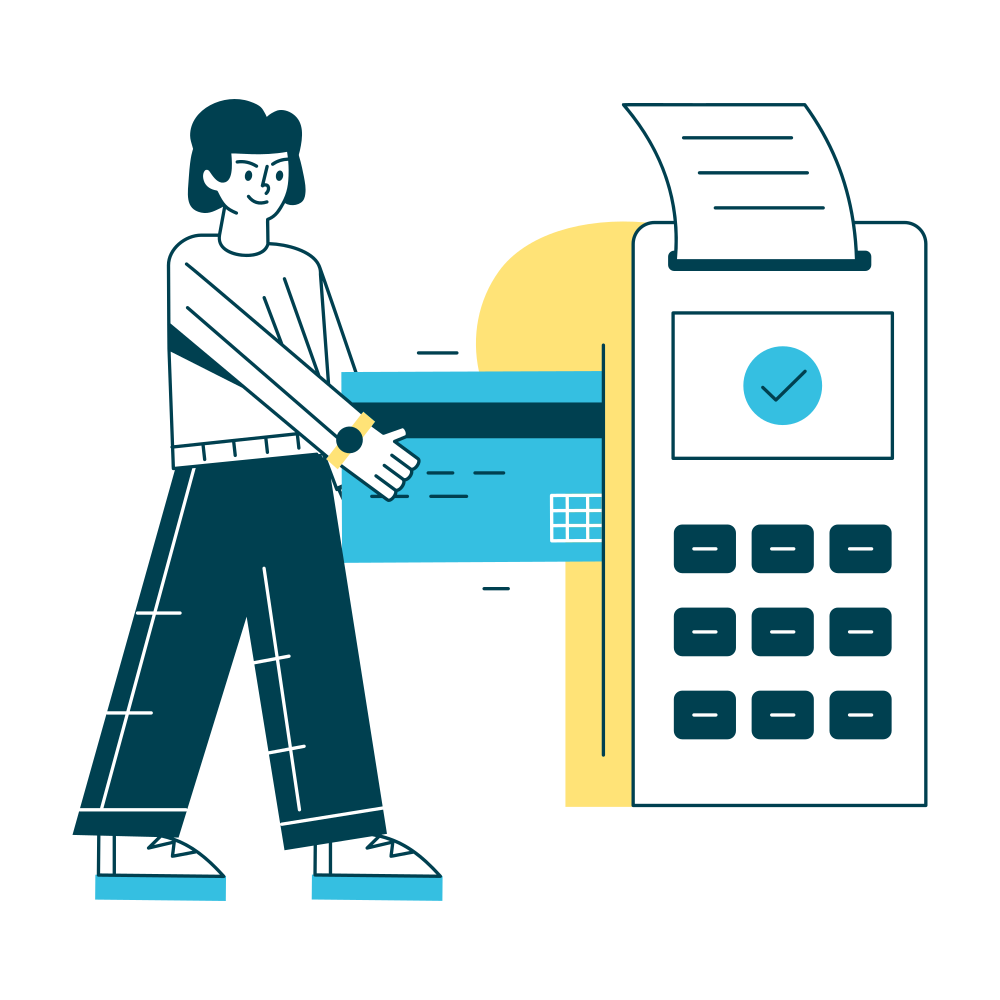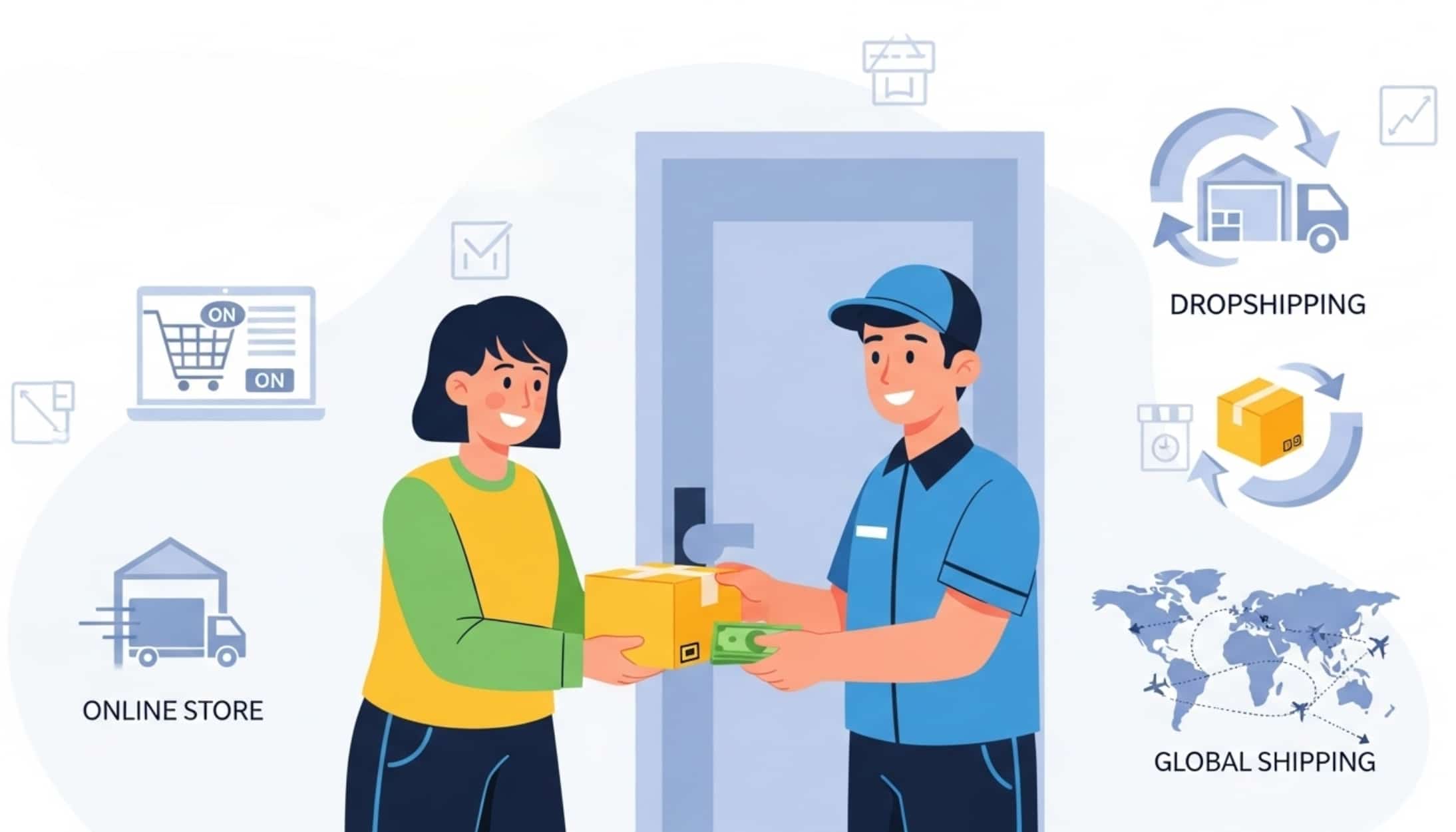- Introduction to Ecommerce Payment Gateway
- What is an eCommerce Payment Gateway?
- Top 12 Payment Gateways for eCommerce Websites
- Payment Gateways vs. Payment Methods: What’s the Difference?:
- The Four Major Types of Payment Gateways
- How Payment Gateways Work
- Security Considerations for Payment Gateways
- Tips for Selecting the Best eCommerce Payment Gateway
- Future Trends in eCommerce Payment Gateways
- Conclusion
- Ecommerce Payment Gateway-FAQs
Introduction to Ecommerce Payment Gateway
Ecommerce payment gateway is now more than just a convenience—they’re a must for any growing online business. As more people shop online, they expect fast, smooth, and secure payments. A great payment gateway does more than just keep your customers happy; it opens new opportunities by making sales across different time zones and locations possible.
The right payment gateway reduces cart abandonment, gives you insights, and keeps everything secure. Let’s explore how to choose the best payment gateway for your business needs.
What is an eCommerce Payment Gateway?
Think of an eCommerce payment gateway as the behind-the-scenes hero of online shopping. It’s the service that handles and approves payments for online stores, acting like a bridge between your website and the banks.
Here’s how it works:
- Encryption: It’s like putting your credit card info in a super-secure envelope while it’s being sent over the internet, so no one can peek.
- Authorization: This checks if there’s enough money in the customer’s account to cover the purchase.
- Settlement: It transfers the money from the customer’s bank to the store’s bank account.
As Jane Doe, an eCommerce consultant, puts it: “Payment gateways are the unsung heroes of online transactions, making sure everything runs smoothly and securely behind the scenes.”:
Top 12 Payment Gateways for eCommerce Websites
Choosing the right payment gateway for your online store is crucial for seamless transactions and customer satisfaction. Here’s a look at twelve of the best payment gateways, each known for its reliability, security, and ease of integration:
- Fatherpay
FatherPay makes managing payments for your dropshipping business super simple. All you need is a country-specific ID and a bank statement—no trade licenses or GST numbers required. It accepts payments from anywhere in the world and in any currency, so you’re covered no matter where your customers are. Funds go straight into your bank account, making everything easy to track. Setting up is a breeze with a quick two-step registration and fast approval. Plus, you can use FatherPay right within the FatherShops platform, making it a perfect fit for your eCommerce business.
- Transaction Fees: 2.50%
- Subscription Fee: $0
- Accepted Payment Methods: All major credit cards, digital wallets
- PayPal
It is a globally recognized payment gateway that offers an easy setup with no contracts or startup fees. It’s accepted in over 200 countries, making it a popular choice for small businesses and startups. With features like One Touch, PayPal enables customers to complete transactions quickly while keeping their financial information secure.
- Transaction Fees: 1.90% to 3.49% + fixed fee per transaction
- Subscription Fee: $0
- Accepted Payment Methods: Visa, Mastercard, Discover, American Express, Venmo, cryptocurrencies.
- Stripe
It stands out for its developer-friendly API, which offers a high degree of customization. It supports a broad range of payment methods and advanced features for subscription billing and fraud detection.
- Transaction Fees: 2.9% + 30¢ per transaction, with additional fees for certain cards and currency conversions.
- Subscription Fee: $0
- Accepted Payment Methods: Bank transfers, debit and credit cards, digital wallets, BNPL.
- Square
It provides a comprehensive solution for both online and in-person payments, perfect for businesses operating in both realms. It includes features such as invoicing and inventory management, with no monthly fees.
- Transaction Fees: From 2.6% + 10¢ per transaction
- Subscription Fee: $0
- Accepted Payment Methods: Credit and debit cards, digital wallets, ACH, Cash App Pay, Afterpay, Square gift cards.
- Authorize.Net
It is one of the oldest and most trusted payment gateways, known for its reliability and excellent customer support. It supports various payment methods, including eChecks and recurring billing.
- Transaction Fees: 2.9% + 30¢ per transaction
- Subscription Fee: $25 per month
- Accepted Payment Methods: Credit cards, eChecks, digital wallets
- Adyen
It is preferred by large enterprises due to its scalability and versatility. It supports multiple payment methods and currencies and offers detailed analytics and customizable checkout experiences.
- Transaction Fees: Fixed fee of €0.11 + a variable fee depending on the payment method.
- Subscription Fee: Custom pricing
- Accepted Payment Methods: Credit and debit cards, digital wallets, BNPL
- Braintree
Braintree, a PayPal service, is known for its flexibility and developer-friendly API. It supports various payment methods, including PayPal, Venmo, credit cards, and digital wallets.
- Transaction Fees: 2.59% + 49¢ per transaction for cards and digital wallets; 3.49% + 49¢ for Venmo; 0.75% for ACH
- Subscription Fee: $0
- Accepted Payment Methods: PayPal, Venmo, credit and debit cards, digital wallets, local payment methods
- 2Checkout
2Checkout(now Verifone) offers a global payment processing solution with support for multiple currencies and payment methods. It includes features like recurring billing and fraud protection.
- Transaction Fees: 0.25% to 2.5% depending on card type
- Subscription Fee: $0
- Accepted Payment Methods: Credit and debit cards, PayPal
- Amazon Pay
It lets customers use their Amazon accounts for payments, providing a trusted and familiar checkout experience. It leverages Amazon’s robust security infrastructure.
- Transaction Fees: 2.9% + 30¢ per transaction; 1% extra for cross-border transactions
- Subscription Fee: $0
- Accepted Payment Methods: Credit and debit cards, Amazon Pay balance
- Klarna
It is renowned for its “buy now, pay later” options, which can enhance customer satisfaction and potentially boost sales. It provides flexible payment plans with a smooth checkout experience.
- Transaction Fees: 0.30 transaction fee plus variable fees between 3.29% and 5.99% of the transaction total
- Subscription Fee: $0
- Accepted Payment Methods: Credit and debit cards, pay-later options
- Worldpay
It offers a comprehensive payment processing solution with support for a wide range of payment methods and currencies. It is known for its robust security features and reliable customer support.
- Transaction Fees: Typically 1.3% to 3%, varying by transaction volume and region
- Subscription Fee: Custom pricing
- Accepted Payment Methods: Credit and debit cards, digital wallets
- Skrill
It is known for its low-cost international money transfers and ease of use. It supports a variety of payment methods and offers a fast setup process.
- Transaction Fees: Nearly 2.50%
- Subscription Fee: $0 for active accounts, $5 inactive fee
- Accepted Payment Methods: Credit and debit cards, digital wallets
Payment Gateways vs. Payment Methods: What’s the Difference?
Payment Gateways
- What They Are: Payment gateways are the services that process and authorize online payments.
- How They Work: They act as intermediaries between your eCommerce website and the financial institutions (like banks and credit card companies) to process transactions.
- Example: When you buy something online and enter your credit card information, the payment gateway (like Stripe or PayPal) encrypts this data, checks with your bank if you have enough funds, and then completes the transaction.
Payment Methods
- What They Are: Payment methods are the different ways customers can pay for their purchases.
- Types: They include credit cards, debit cards, digital wallets (like PayPal or Apple Pay), bank transfers, and buy-now-pay-later options.
- Example: When you choose to pay with a credit card, PayPal, or any other option at checkout, these are the payment methods.
In Summary:
- Payment Gateway: Think of it as the cashier that processes your payment.
- Payment Method: Think of it as the cash, card, or digital wallet you use to pay.
By understanding this, you can see that payment gateways handle the technical part of processing payments, while payment methods are the various options you offer your customers to pay for their purchases.
The Four Major Types of Payment Gateways
There are Different types of payment gateways which offer various benefits depending on your business needs. Let’s read about the types of payment gateways we have:
- Hosted Payment Gateway
A hosted payment gateway redirects customers to another website to complete their payment. Once the payment is finished, the customer is redirected back to your site. This type of gateway is easy to implement and offers high security since the payment provider handles sensitive data. An example of a hosted payment gateway is PayPal. - Self-Hosted Payment Gateway
A self-hosted payment gateway allows customers to enter their payment details directly on your website. You process the payment on your site without redirecting them, giving you full control over the checkout experience. This approach requires you to handle security and compliance. WooCommerce Payments is an example of a self-hosted payment gateway. - API-Hosted Payment Gateway
An API-hosted payment gateway collects payment details on your website and sends them to a payment processor via an API. The transaction is processed seamlessly without redirecting customers, providing a smooth and integrated experience. This method offers high customization but requires technical setup. Stripe is a popular example of an API-hosted payment gateway. - Local Bank Integration Gateway
A local bank integration gateway redirects customers to their bank’s website to complete the payment. After the transaction, they are redirected back to your site. This type of gateway is often used in regions where bank-based payments are common. iDEAL in the Netherlands is an example of a local bank integration gateway.
How Payment Gateways Work
Understanding how payment gateways work can help you make an informed decision for your eCommerce business. Here’s a simpler breakdown of the process:
- Customer Selection: The customer chooses the items they want to buy and goes to the checkout page on your website.
- Data Encryption: When the customer enters their payment details (like credit card information), the payment gateway encrypts this information to keep it safe from hackers.
- Authorization Request: The payment gateway sends the encrypted payment information to the customer’s bank to ask for approval.
- Response: The bank checks if the customer has enough money or credit. It then sends a response back to the gateway, either approving or declining the payment.
- Transaction Completion: If the payment is approved, the gateway finalizes the transaction and transfers the money from the customer’s bank to your business account.
- Encryption: A way of scrambling data so unauthorized people can’t read it.
- Authorization: The bank’s process of checking if the customer has enough money to make the purchase.
- Settlement: When the money is actually moved from the customer’s bank account to your business account, completing the sale.
By understanding these steps, you can see how payment gateways securely handle transactions, ensuring that both you and your customers are protected.
Security Considerations for Payment Gateways
When you’re setting up your online store, one of the most important things to think about is the security of your payment gateway. Here’s what you should look for:
- PCI DSS Compliance: This is basically the gold standard for keeping credit card info safe. Make sure your payment gateway follows these rules to protect your customers’ data.
- Encryption: Encryption is like wrapping your data in a secure envelope so no one can read it while it’s being sent over the internet. Look for gateways that encrypt data both in transit and at rest.
- Tokenization: Instead of storing actual credit card numbers, tokenization replaces them with unique tokens. This way, even if someone hacks your system, they can’t do anything with the tokens.
- Fraud Detection and Prevention: Good payment gateways use smart tools to spot and stop fraud. Features like address verification (AVS) and card verification (CVV) checks add extra layers of security.
- 3D Secure Authentication: This is an extra step where customers confirm their identity (like Verified by Visa or MasterCard SecureCode). It’s an additional checkpoint to make sure the person making the transaction is really the cardholder.
- Secure APIs: The APIs (the connections between your store and the payment gateway) should be secure. This prevents bad actors from sneaking in through technical vulnerabilities.
- Regular Security Audits: Choose a gateway that regularly checks its own security through audits. This helps catch and fix potential issues before they become problems.
- Compliance with Local Regulations: Depending on where you’re doing business, there might be specific laws about data protection (like GDPR in Europe). Make sure your gateway is compliant with these laws to avoid any legal troubles.
- User Authentication: Strong authentication methods, like multi-factor authentication (MFA), protect your merchant account from unauthorized access. It’s like having an extra lock on your door.
- Incident Response Plan: Even with all these precautions, breaches can happen. A good payment gateway will have a plan in place to deal with any security incidents quickly and effectively.
Tips for Selecting the Best eCommerce Payment Gateway
Choosing the right payment gateway is crucial for the success of your online business. Here are some important factors to consider and actionable steps to help you make the best decision:
Key Factors to Consider
- Security: Ensure the payment gateway complies with PCI-DSS standards to protect card information.
- Fees: Compare transaction fees, setup fees, and other charges. Consider your budget and transaction volume.
- Integration: Check if the payment gateway is compatible with your eCommerce platform for seamless integration.
- User Experience: Choose a gateway that offers a smooth and intuitive checkout process to reduce cart abandonment.
- Support: Ensure the payment gateway offers reliable customer support for quick resolution of any issues. Actionable Steps
- Assess Needs: Determine what features are essential for your business, such as recurring billing or multiple currencies.
- Research: Compare the top payment gateways based on the factors mentioned above and look for reviews from other businesses.
- Trial: Use trial periods or demo versions to test the gateways and see if they meet your needs.
- Consult: Seek advice from industry experts or peers with experience using different payment gateways for valuable insights.
“Selecting the right payment gateway is a balance between cost, security, and user experience.” – Sarah Lee, eCommerce Strategist.
Future Trends in eCommerce Payment Gateways
The world of eCommerce payment gateways is always evolving. Here’s a sneak peek into what’s coming up:
- Cryptocurrency Payments
Imagine paying for your online purchases with Bitcoin or Ethereum. More and more payment gateways are starting to accept cryptocurrencies, making it easier for tech-savvy customers to shop with their digital coins. - Buy Now, Pay Later (BNPL)
This trend is booming! Services like Klarna and Afterpay let customers buy something now and pay for it over time. It’s a great way to attract more shoppers who might not have all the money upfront. - Mobile Wallets
Mobile wallets like Apple Pay, Google Pay, and Samsung Pay are becoming super popular. They make checkout faster and more secure by using your phone’s biometrics (like fingerprint or face recognition). - AI and Machine Learning
Payment gateways are getting smarter. They’re using AI to detect fraud more accurately and to personalize the payment experience. For example, if the system knows you always use a particular card, it can suggest it to speed up the process. - Voice-Activated Payments
Picture this: you tell your smart speaker to buy something, and it does the rest. Voice-activated payments are on the rise, making shopping even more convenient. - Omni-Channel Payment Solutions
Customers want a seamless experience whether they’re shopping online, in-store, or through an app. Payment gateways are developing solutions that work across all these channels, so shoppers have a consistent and smooth experience. - Biometric Authentication
Forget passwords and PINs. Biometric authentication (like fingerprints, facial recognition, and even iris scans) is making payments more secure and faster. - Blockchain Technology
Blockchain isn’t just for cryptocurrencies. It can make all transactions more transparent and secure, reducing the risk of fraud and errors. - Subscription-Based Billing
As more businesses move to subscription models, payment gateways are improving their recurring billing features. This makes it easier for companies to manage monthly payments and for customers to handle their subscriptions. - Enhanced Customer Support
Payment gateways are focusing more on providing top-notch customer support. This includes 24/7 assistance and real-time issue resolution, ensuring a smooth payment experience for everyone.
Conclusion
Choosing the right eCommerce payment gateway is a critical decision that can impact your business’s success.
By understanding the differences between payment gateways and methods, knowing how gateways work, and following the tips provided, you can select the best gateway for your needs, ensuring smooth, secure, and efficient transactions for your customers.
Ecommerce Payment Gateway-FAQs
-
How to choose a payment gateway for your ecommerce store?
To choose a payment gateway for your eCommerce store, start by figuring out what payment methods and regions you need to support. Compare the features and fees of different gateways to find one that fits your budget.
Ensure the gateway has strong security and integrates well with your platform. Check the quality of customer support. These steps will help you pick the best payment gateway for your store.
-
Can we use multiple payment gateways on ecommerce website?
To use multiple payment gateways depending on the product, start by choosing gateways that suit different payment needs.
Next, integrate these gateways into your eCommerce platform and configure rules to assign specific gateways to various products or product categories. Be sure to test the setup thoroughly to ensure that transactions process correctly for each product.



 Easy ID verification
Easy ID verification



